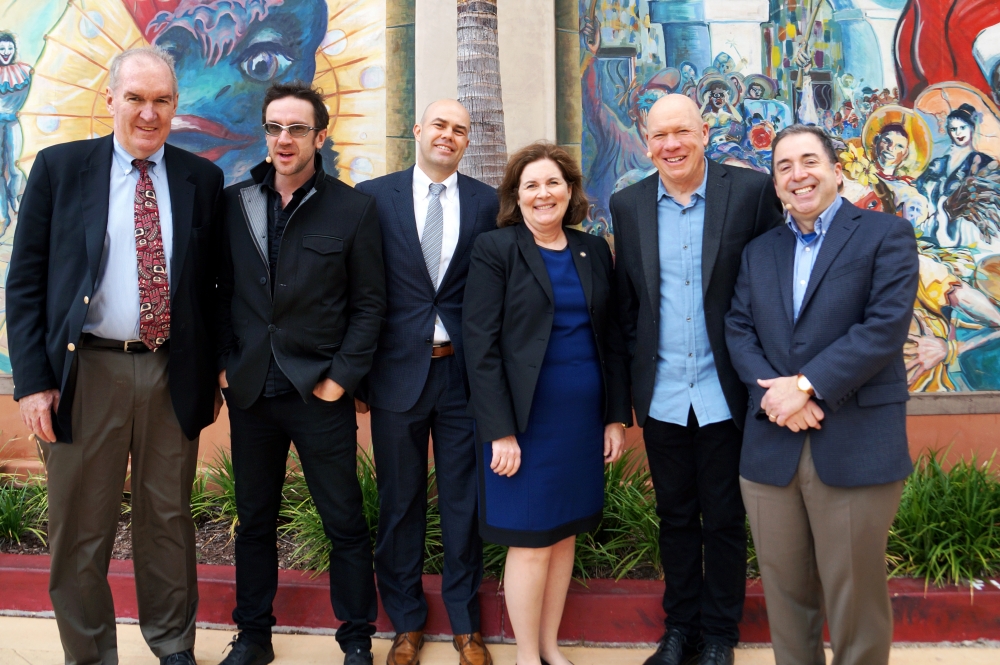
Reallocation to Automation
From the smaller splashes of reallocation to the incoming tide of automation, the present face and potential future of economic growth was the hot topic of the UC Santa Barbara Economic Forecast Project’s (EFP) 36th Annual Economic Summit. In addition to the essential fare that is the local and regional Santa Barbara County economic outlook, speakers provided a wide-angle view of economic growth in the country, the impact of globalization and the look of things to come.
Local and Regional
If you held up a magnifying glass to some of the major indicators of economic activity in the distant wake of the Great Recession, according to UCSB economics professor and EFP Director Peter Rupert, you’d see a lot of movement and reallocation as the economy approaches levels it achieved a decade ago.
“In the shorter run, there’s always constant churning,” Rupert said. Thanks to a mix of several factors, including technology, business environment and government policy, the jobs landscape has changed, he said. There is net job creation, albeit with fewer jobs being created, but also fewer jobs being destroyed. Some of this fluctuation could be attributable to a decrease in the numbers of startup firms, which are major sources for new jobs, but also to people who move on and move up in an economy with more wiggle room than before.
Populations are also fluctuating. In Santa Barbara County prior to and during the last major recession, population decreased as people departed. As the economy returns to pre-recession levels, people are moving in again; most tend to be younger, foreign immigrants with higher levels of income and education.
The Santa Barbara County housing market has also “cooled off,” according to Rupert. The growth rate has topped off at about 3 percent, compared to 7 percent overall in California and across the nation. The fastest growth was experienced in the City of Guadalupe, at 12 percent, while no growth was observed in the City of Carpinteria.
National
At the national level, economic expansion overall has often been deemed “lackluster,” “disappointing” and “underwhelming,” reported Esther George, president and CEO of the Federal Reserve Bank of Kansas City.
“But what this current expansion has lacked in strength, it’s made up for in longevity,” she said. Unemployment, for instance, has gone from a peak of 10 percent in the last economic downturn to a low of 4.4 percent. The jobs market is tight, and has forward momentum.
However, said George, the first quarter report, which shows an underperforming gross domestic product, is “not indicative” of bad times to come. Residual seasonality, decreased consumer spending on utilities thanks to mild weather, and difficulties in measuring the performance of a system with regular dips and spikes have given her no cause to worry.
“We need to be careful not to overreact,” George said.
Despite the weak first quarter numbers, added George, it would be appropriate to continue removing the accommodative monetary policies that were put in place to stimulate the economy after the Great Recession. Short-term rates have been raised, she explained, but “financial conditions have remained very accommodative.” The danger: Taking too long to normalize the economy with a tight labor market and inflation near the typical 2 percent poses a risk to economic stability.
Global
Looking beyond the nation’s borders, EFP speakers also discussed globalization, foreign trade and innovation.
“The great myth for people without economics education is that globalization causes global inequality,” said Tim Kehoe, economics professor at the University of Minnesota. It did in the beginning, he continued, but before the 1800s-era global economic growth that resulted from the Industrial Revolution, the vast majority of the world was “one bad harvest away from starvation.” Over centuries and with the recent economic ascension of countries such as China and India, “the world is in the middle of the greatest reduction of economic inequality of all time,” he added.
Kehoe also debunked the myth that other countries’ economies are set to take over that of the United States. Without accounting for cost of living, Norway, for instance, might look richer, but for a territory of the same size, Minnesota was actually the wealthier one.
“Luxembourg looks richer than the United States,” he said. “Santa Barbara is richer. And about the same size.” Japan came close in the 1980s, Kehoe said, but their fortunes turned in the 1990s and the country currently faces a population decline.
Similarly, with innovation, people need not fear so much, said Russ Roberts, a research fellow at Stanford’s Hoover Institution. Like global trade, the benefits go beyond borders.
“Trade and innovation are very similar,” he said. “They’re about finding ways to do more with less. And that is the only way to create more prosperity for everyone.” As the global standard of living rises, he explained, efficiency is key. In fact, since 1990, when the US began its major trading with China — and with the advent of computer-aided automation — manufacturing jobs in the country decreased by 5 million, but about 12 million jobs have been added overall and productivity has increased.
The focus, according to both Kehoe and Roberts, shouldn’t be on retreating and withdrawing behind borders as seen by populist actions such as Brexit — the same attitude that set the stage for world conflict in the 1930s. Rather it should be on solving the problems that result from advances in innovation, such as job loss in some sectors, environmental degradation or, in more advanced countries, personal fulfillment. Meaningful education, said Roberts, will allow those who could be displaced by the onslaught of technology to not only be competitive, but also to find a niche in a world that will inevitably be shared with robots.
The Future
Inventor/hacker/futurist Pablos Holman is already doing that. And in fact, he is helping to create technology to address basic needs of some of the world’s most disadvantaged populations. Holman’s projects at Intellectual Ventures Laboratory have included high-tech cold storage containers that can keep vaccines cool and viable for countries in sub-Saharan Africa; lasers that can seek and destroy malaria-transmitting mosquitoes; and power generators that use depleted nuclear waste without the danger of Chernobyl-type accidents. With advancements in computational power, according to Holman, a new technology’s effectiveness and potential problems can be perceived even before it is deployed on a wide scale.
“This is unprecedented for humans,” he said. “We, never in our lives, have had the computational ability to solve problems this way.” In fact, problem-solving — a quintessentially human trait — would be greatly assisted by the power of computers.
Beyond gadgets and apps, Holman sees a bigger part, and responsibility, for American innovation and technology.
“I think it’s important to understand that we have a specific role in the world,” he said, referring to the top economic tier that Americans represent. “Which is to be rich, and to develop these things, invent them, to deploy them first, to try them all out, to make an early market for them and figure out what works so that we know what solutions work, so we can scale them for the rest of the world.”



